Search Results
Fine Jewelry University Articles matching: “Blood stone”
Showing only FJU Article results. Click here to show all results.
Fine Jewelry University (Show All FJU Articles)
-
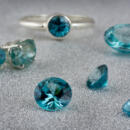
Gem in the Spotlight: Blue Zircon
Zircon may be last in the alphabet of gemstones, but it is first in sparkle. The crystal structure of zircon creates one of the liveliest displays found in any … other colored gems? Zircon has a high refractive index (1.92-2.01). The refractive index (abbreviated RI) of a gemstone is its optical property that refers to the ratio of the speed of light in a vacuum to the speed of light through a … is also of interest to geologists because it is one of the oldest minerals on earth. In the gem world, a type of stone is often given different names for each of its colors, and Zircon is no exception. Here are examples of a few of them. …
-
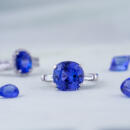
Gem in the Spotlight: Tanzanite
Beauty and rarity are two wonderful traits in a gemstone. Tanzanite has them both. In fact, it is estimated that Tanzanite is 1,000 times rarer than diamond. But, what makes… majority (current estimates are around 95%) of tanzanite is heat treated to help bring out the vibrant blues. The stones that haven’t been heated by humans were heated through natural effects while they were still underground. Without … isn’t heated and is still pretty enough for jewelry displays trichroism. Trichroism is an effect that causes gemstones to display different colors when viewed at different angles. Tanzanite in its raw form has three colors: blue, purple, …
-
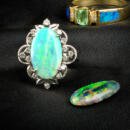
Gem in the Spotlight: Opal
… the gem world, and the lore that surrounds it is almost as colorful as the gem itself. Opal is the traditional birthstone for those lucky enough to born in October, and it is found in a huge variety of colors (sometimes all within the … color, and a wide range of colors. Red carries more value and is by far the rarest color that opals can display. Stones with larger patches of color are valued higher than those that display only small pins (pinfire) or no play of color …
-
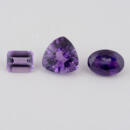
Gem in the Spotlight: Amethyst
… hard as tourmaline, softer than sapphire and topaz, and harder than opal and tanzanite. This makes it a durable gemstone that is resistant to scratching and chipping. It is also resistant to heat and chemicals which means that it can …tears of wine in remorse for his actions. These tears stained the quartz purple, resulting in the creation of the gemstone known as amethyst. Amethyst has a long history of being used in jewelry and other decorative items. It was highly …
-
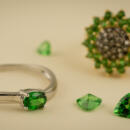
Gem in the Spotlight: Tsavorite Garnet
… lively with a high refractive index giving it excellent sparkle and scintillation. Tsavorite is also a very rare gemstone. It is uncommon to find Tsavorite in sizes larger than five carats, and most faceted stones are below two carats. By… doesn’t exactly roll off the tongue. So, a proper name was definitely in order. The nomenclature of gemstones follows certain rules, and according to modern mineralogical methods, gemstones are given a name which ends in “-ite”. In honor …
-
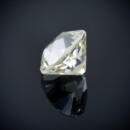
The History of Diamond Cuts
…recorded statements about diamonds is: “the substance that possesses the greatest value, not only among the precious stones, but of all human possessions.” said by Pliny, the Roman historian. The story of the diamond cut is the story of …. The Old Mine cut follows the angles and shape of the octahedral diamond crystal to save on weight from the rough stone and to make it easier to cut with the diamond cutting technology of the day. Old Mine cut diamonds range from almost …
-

How to Tell If a Diamond Is Natural or Lab Grown
… have imaginative names like DiamondCheck, DiamondSure, and DiamondView. Roughly speaking, these machines work like our DiaTrue. They bombard a diamond with specific types of radiation (nothing harmful to humans) and analyze what the stone outputs. There are certain, tell-tale signs of the various processes used to make lab grown diamonds that show up as spikes and troughs at specific wavelengths in the spectroscopic analysis. With CVD diamonds, the DiamondView machine …
-
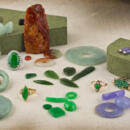
Gem in the Spotlight: Jade
Jade has one of the richest heritages of all gemstones. People have been using jade from as early as 6,000 BC, and it has been an incredibly important part of Asian, …gem. History and Lore of Jade Jade’s incredible toughness has made it a useful tool throughout history. During the Stone Age of many cultures, jade was used for agricultural tools and weapons such as axe heads and knives. Jade has also … far are dyed quartz, glass, and plastic. These imitations can be identified quickly by a trained gemologist. Other stones that have been confused with jade over the years are chrysoprase, serpentine, maw sit sit, and hydrogrossular garnet…
-
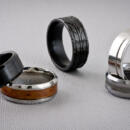
Alternative Metals for Men’s Jewelry
… jewelry metals can usually wear tungsten jewelry without issue. Tungsten comes from a Swedish term meaning “heavy stone.” It is element 74 on the periodic table with the chemical symbol “W”. The “W” comes from its earlier name, wolfram. … metal for your wedding band, but today there are some excellent options that are definitely worth checking out. Bloodwood makes stunning rings that are strong, scratch resistant, hypoallergenic, lightweight, and very comfortable to wear. …